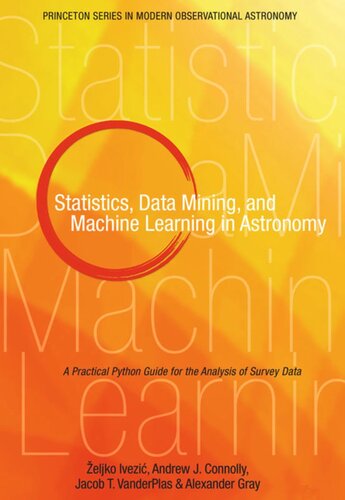

Most ebook files are in PDF format, so you can easily read them using various software such as Foxit Reader or directly on the Google Chrome browser.
Some ebook files are released by publishers in other formats such as .awz, .mobi, .epub, .fb2, etc. You may need to install specific software to read these formats on mobile/PC, such as Calibre.
Please read the tutorial at this link: https://ebookbell.com/faq
We offer FREE conversion to the popular formats you request; however, this may take some time. Therefore, right after payment, please email us, and we will try to provide the service as quickly as possible.
For some exceptional file formats or broken links (if any), please refrain from opening any disputes. Instead, email us first, and we will try to assist within a maximum of 6 hours.
EbookBell Team

4.1
50 reviewsAs telescopes, detectors, and computers grow ever more powerful, the volume of data at the disposal of astronomers and astrophysicists will enter the petabyte domain, providing accurate measurements for billions of celestial objects. This book provides a comprehensive and accessible introduction to the cutting-edge statistical methods needed to efficiently analyze complex data sets from astronomical surveys such as the Panoramic Survey Telescope and Rapid Response System, the Dark Energy Survey, and the upcoming Large Synoptic Survey Telescope. It serves as a practical handbook for graduate students and advanced undergraduates in physics and astronomy, and as an indispensable reference for researchers.
Statistics, Data Mining, and Machine Learning in Astronomy presents a wealth of practical analysis problems, evaluates techniques for solving them, and explains how to use various approaches for different types and sizes of data sets. For all applications described in the book, Python code and example data sets are provided. The supporting data sets have been carefully selected from contemporary astronomical surveys (for example, the Sloan Digital Sky Survey) and are easy to download and use. The accompanying Python code is publicly available, well documented, and follows uniform coding standards. Together, the data sets and code enable readers to reproduce all the figures and examples, evaluate the methods, and adapt them to their own fields of interest.